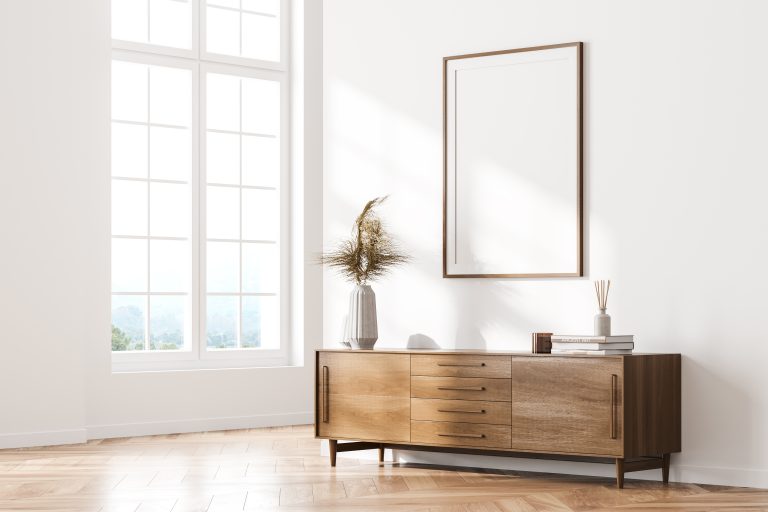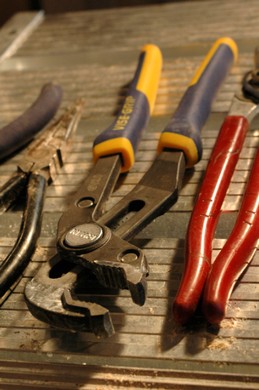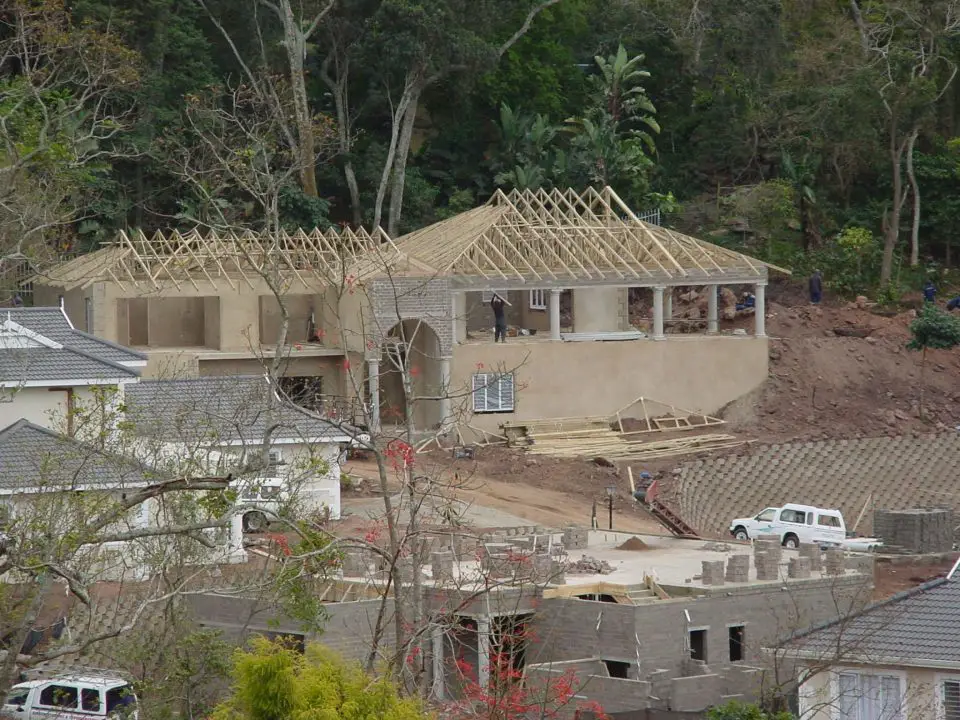
Several houses under construction in Durban, South Africa. Old-time, European construction methods are the norm in this city.
As you’d expect, most things in South Africa are different than in North America, and this goes for the way contractors build houses, too. I discovered this first-hand as my wife and I spent almost a month in Durban back in 2008 – the third largest city in the country – picking up our 7-month-old adopted daughter, Ellie. I’d expected the homebuilding scene to be worlds different than back home, and a contractor named David Scates showed me exactly what those differences look like. If you have an interest in the ways things are build, I think you’ll like this article.
Homebuilding in Durban
At the time of my visit, Scates had been a contractor in Durban for 22 years. I met up with him one morning while snooping around one of his residential building sites in a posh section of town. Five minutes later he was happily driving me to see three other projects he had on the go — two involving major additions and another home he’d built on spec, with plans to resell after very major renovations.
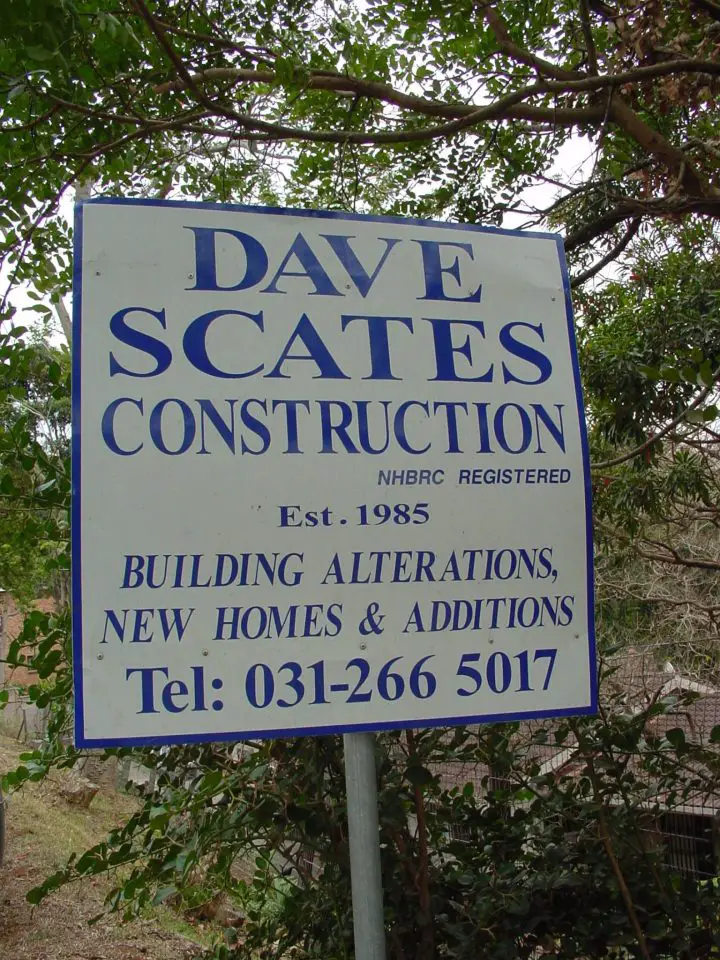
Scates has about 50 people on payroll and hires sub-contractors for most of the usual things. He also loves his work. “If I was a boy these days they’d diagnose me with ADHD. I can’t sit still”, he told me. “I never learned to spell properly and I need to be outside making things happen,” explains the successful, 50-something year old. “Building homes lets me create.”
Never Travels Far From Home
Scates was raised in the upscale neighbourhood where he now lives and builds, and most of his projects are within a scant 5 km radius of his house. To understand this enviable situation, you need to forget notions about South Africans living in mud huts with animal skin doors. Durban boasts many amazing homes – some of the most luxurious in the world – and plenty of them are concentrated in neighbourhoods like the one that keeps Scates and his crews working year round.

British Construction Transplated
Before you can understand the Durban housing scene, you’ve got to grasp two fundamentals. First of these is just how strong the traditional British influence is in this part of South Africa. Homes are constructed just like they’ve always done it in England, in a masonry-heavy way, thousands of miles away from where this was developed originally. And second, even in a post-apartheid world, racial issues still play a major role in what it’s like to be a contractor in South Africa – and every other part of life in this country, for that matter. Racial, yes, but probably not the way you imagine.
Durban is hot, humid and populated with wood eating bugs. That’s why the British style of building with bricks, mortar and very little wood has remained so popular here. Frost isn’t an issue, of course, (it’s never been colder than 48ºF or 9ºC in Durban), so foundations need only be deep enough to get to solid ground, though that can sometimes be deeper than a typical Canadian basement. The first project I visited was built on a sloped site, covered with very soft sand. Bore holes had to be drilled 10 feet down at all building corners and stress points, then filled with rebar and concrete to create foundation piers that support site-cast concrete beams underneath all walls. Using machinery like this to build foundations is very unusual in South Africa. Most foundations are shallow by Canadian standards – perhaps only 18” down if soil conditions are solid – and almost always dug by hand because labour is so cheap. I often saw a hundred men digging ditches by hand alongside modern super highways in and around Durban. It’s a strange sight.
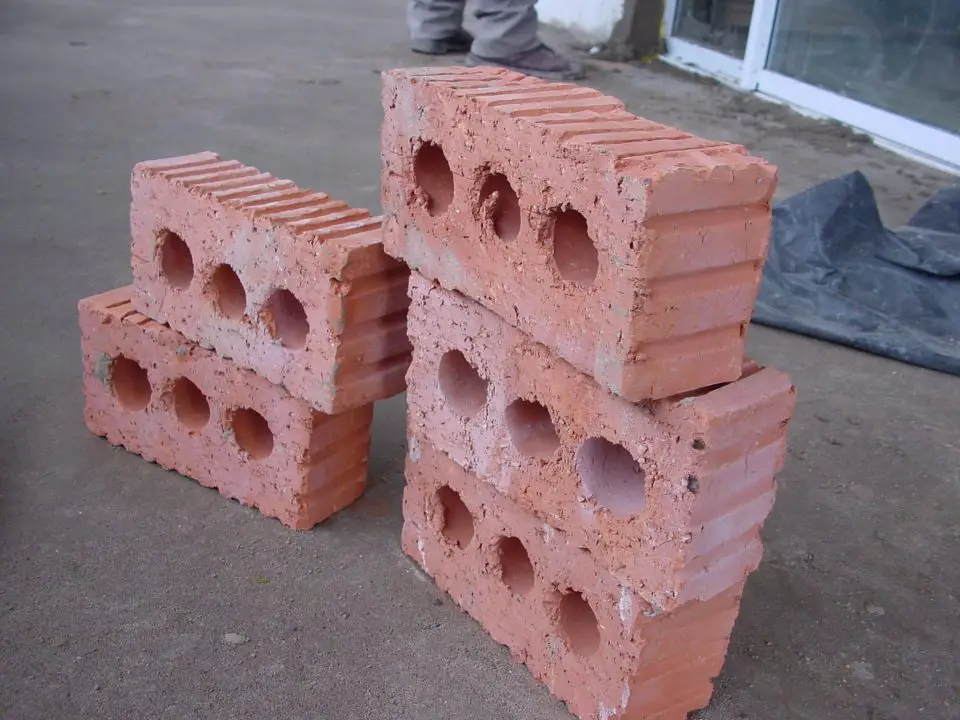
Instead of wooden stud frame walls, as we’re used to in Canada and the US, the meat-and-potatoes of South African residential and light commercial construction is a multi thickness of clay bricks, plastered inside and out with mortar. This technique is used everywhere in the country and has been for a long time. It’s fairly rare to see exposed brickwork with tooled joints, as most brickwork is here. As you’d expect, brickwork that’s destined to be covered doesn’t need to look good on its own when first laid, and so it doesn’t. Although the brickwork doesn’t look great when exposed, what does look impressive is the way the black African tradespeople apply plaster. It’s hard work to apply well, especially using the heavy 3-parts sand, 1-part Portland mixtures that are used exclusively. But the results are remarkably smooth wall and ceiling surfaces. Especially impressive are the caps you’ll find on short walls used everywhere around balconies and staircases. Using nothing more than a level, 12” trowel and a good eye, South African masons create smooth, straight caps that look as precise as precast. I never saw a mason who was not a member of one of the indigenous tribes in the area – typically Zulu or Xhosa.
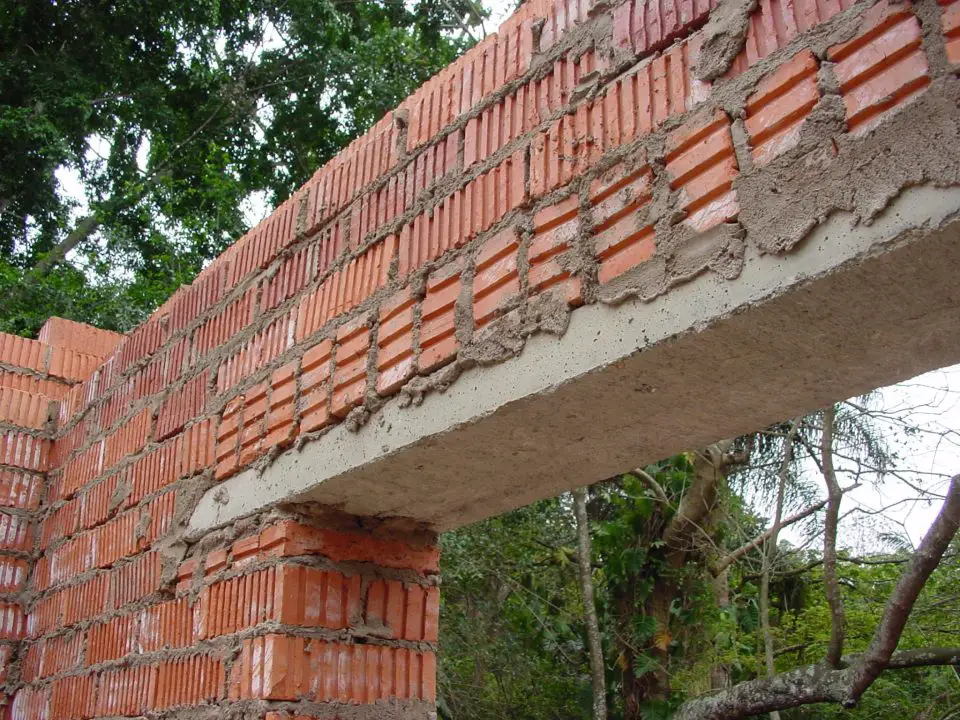
Brickwork spanning openings up to about 18 feet are laid over top of ready-made, pre-stressed concrete lintels that look too small for the job. You can see what I mean to above. Each length of lintel has four galvanized wires cast into it, with one lintel placed underneath each of the inner and outer layers of brick. Lintels are cut to length on site with an electric abrasive saw, and are as thick as one course of bricks.
Solidity is the thing I like most about South African homes. We visited half a dozen different ones while we were there, and it’s like living inside a rock. Interior walls are built with the same double bricks plastered with smooth mortar, and even ceilings are solid masonry, too. These are typically built with a series of precast lintels that support precast cross pieces molded to interlock with the lintels. Everything fits together dry, then a 2” layer of concrete is poured on top to create the floor above, with mortar troweled on underneath to create the ceiling surface below. Like I said, it’s living in a rock,
Roof trusses, instead of traditional rafters, are one of the only innovations you’ll find on a modern South African homebuilding site. These support lengths of 2×2 strapping spaced horizontally to hold up the ends of concrete roof tiles – the nearly-ubiquitous roofing choice in South Africa. Traditionally, these tiles were held in place exclusively by gravity, and older homes are still like this today. No fasteners at all. These days new homes have the tiles around the eaves secured with plastic tethers screwed to the 2x2s — called storm ties – while the tiles above are still held down by nothing but gravity and the way they interlock with neighbouring tiles. You’d think they’d blow off during storms, but they don’t. Since wood is used so sparingly in South African homes (forests with big trees are rare), construction of roof frames is usually subbed out to specialists and not handled by Scates’ main crews.

During the three weeks I spent in and around Durban, I never saw a white person actually work on a house as a tradesperson. Not once. With the exception of supervision, plumbing, electrical work, all homebuilding in South Africa is done exclusively by black people, though this is a relatively new development. Until the late 1980s, it was actually illegal for anyone other than a white man to pick up a trowel and get paid for it. This kept the labour pool small, holding wages high enough to make it worthwhile for European brick layers and plasterers to travel all the way down from continental Europe to work in South Africa. These days, things are more different than anyone could have predicted.
When legislative changes opened the building trades to anyone who wanted in – regardless of colour – it added hundreds of thousands of people to the labour pool, causing wages to plummet and stay down. Where it used to be possible for a bricklayer to earn enough to support the kind of life we enjoy in North America, these days your kids earn more money working a summer job than the highest paid trade worker building houses in South Africa. The changes made to the labour market have changed all that.
When we were in Durban, general labourers earned about 100 Rand per day (less than $15). The highest paid bricklayer gets about 300 Rand per day (just under $50). “It used to be possible to earn a living as a bricklayer,” explains Scates. “Now you can’t. You need to manage 20 bricklayers to make enough money to live. That’s really what I do. I manage people and make sure they keep doing a good job.”

Even though South African housing prices had shot up hundreds of percent over the last few years before we visited, the cost of houses in this country is unbelievably low when converted to dollars. One stunning mansion I visited during my homebuilding tour with Scates was originally built 50 years ago for the Danish ambassador, and was recently sold to a private owner for the same price you’d pay for a basic starter bungalow in Canada. It’s common to see astonishing properties available for several hundred thousand dollars.
Watching Warren Miller, a supervisor on one of Scates’ sites, I saw just how hands-on the management of the labour force has to be in South Africa. “I’ve got to watch everything constantly,” he explained. Even in the short time I was there, Miller was watchdogging major and minor details, and insisting on corrections that a superintendent would normally never have to deal with on North American projects. Wiping down tile grout more thoroughly, plastering more neatly next to window casings, taking basic measurements for materials — the work of supervision involves much more micro managing than we’re used to in North America.
In almost every way, South Africa is far more complex and volatile a society than North America. It stuck me over and over that this country that’s poised to explode and in destructive ways. The racial prejudice that exists today is almost as extreme as it was during the years of apartheid that ended in 1994, except that the tables are turned. Nowadays the most oppressed group is the white male, at least as far as government jobs and the public sector is concerned. There is also a wide variety of racism. Indians against blacks, blacks against “coloured” (people of mixed origin), all with white people (especially men) on the bottom of the totem pole.
I’m told that until the 1980s, neighbourhoods in Durban looked like anything you’d find in nice, North American communities – lawns, backyards, children playing outdoors. When we were there every house (and I mean every house) was surrounded by tall masonry walls and razor wire. Precautions like these were necessary, too. Murderous day-time home invasions were not uncommon. I even heard from more than one person that Nelson Mandela, the man behind the dismantling of apartheid in 1994, died very sad about the state of his country. There’s also just as much distrust among the 11 official language and cultural groups of South Africa as there is across color lines. It’s a strange mix of tensions that makes society here in North America seem so simple.
Homebuilding methods in South Africa are an enduring example of a tradition of quality that hasn’t changed much for 100 years, all in a place where just about everything else has changed. Socially speaking, this country may be more confusing and complicated than I expected, but the houses there are impressive, traditional and rock solid that I thought I’d find.







